Matador Network's Blog, page 1016
September 11, 2019
Dutch museum Nazi design exhibition

Sometimes art can be incredibly controversial, and not just because people disagree on its aesthetic or meaning. The Design Museum in Den Bosch, in the Netherlands, is drawing outrage for featuring an exhibit on Nazi design, which explores how art fueled the “development of the evil Nazi ideology.”
There are swastikas hanging from the walls, photos of Hitler’s rallies, and Nazi propaganda films playing throughout the gallery, yet instead of having the desired, thought-provoking effect, it has instead sparked protests and claims that the exhibition is “provocative” by the Association of Dutch Anti-fascists and the Dutch Communist Youth Movement.
In addition to propaganda films and photos, the “Design of the Third Reich” exhibit includes a period Volkswagen Beetle, images of the 1936 Berlin Summer Olympics, and artwork by Hitler’s favorite sculptor, Arno Breker.
View this post on InstagramA post shared by Design Museum Den Bosch (@designmuseumdenbosch) on Sep 7, 2019 at 5:45am PDT
To prevent ill-intentioned visitors to use the exhibit as a way of glorifying the ideas of the Third Reich on social media, photography has been prohibited and security within the space has been heightened.
According to the museum, presenting Nazi imagery in a thoughtful context is integral to getting a full picture of the Nazi regime. “The Nazis were masters in using design to achieve their goal,” said the museum, “to both convince and destroy huge numbers of people. Design Museum Den Bosch is a design museum with a critical attitude. If you wholeheartedly want to be able to say ‘this never again,’ you must take time to analyse how the influencing processes worked at the time.”
View this post on InstagramA post shared by Design Museum Den Bosch (@designmuseumdenbosch) on Sep 2, 2019 at 3:05am PDT
The issue speaks to a broader debate over whether uncomfortable, emotionally charged periods of history should be spotlighted in museum settings. “Never forget” is a common utterance associated with Nazi atrocities, but part of that is taking the effort to actively remember, educate, and understand. Museums are an important factor in that.
The exhibition opened on September 8 and will run until January 19, 2020. 

More like this: The 7 most incredible museums to visit in 2019
The post Dutch museum faces criticism over Nazi design exhibition appeared first on Matador Network.

How to explore Niagara wine country

When you hear “Niagara Falls,” you probably immediately think of a waterfall. If you’re unfamiliar with Niagara, you might consider heading into the mist on the Hornblower or walking through quirky Clifton Hill. But for those of you who wish to venture away from the busiest tourist area for something a little more taste driven, a trip to the small Ontario town Niagara-on-the-Lake may be in order. This town offers not only a quaint historic area and beautiful views of Lake Ontario but is also quickly becoming a destination for wine tourists.
With more than 20 wineries in the immediate area (and more than 80 just a short drive away), Niagara-on-the-Lake is a haven for local wine lovers and tourists alike. One way to see them is to jump in a car and head from winery to winery, but with a nature trail and easy routes connecting many of the vineyards, the best ways to take it all in is on a bike. And not just any bicycle — an electric bike.
The electric cycle, or eSkooter as it’s known in Niagara-on-the-Lake, was new to me, but the quiet-riding, self-propelled bicycles — although admittedly a bit scary at first — ride just like manual cycles without the effort. Renting one might cause manual bikers to look on with envy. One cyclist called out, “Hey, that’s cheating,” as I quickly sped past.
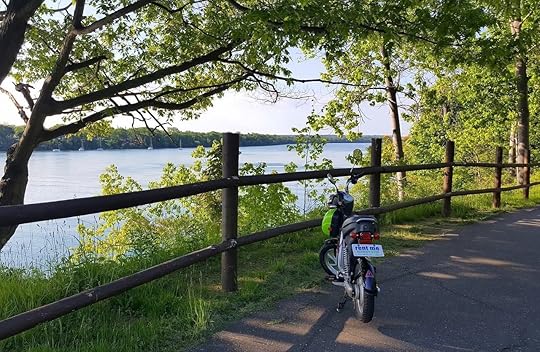
Photo: ESkoot Niagara/Facebook
Rent the bikes at eSkoot Niagara, just a few minutes from downtown Niagara-on-the-Lake. There, you’ll be fitted for a helmet (yes, those are required) and receive a quick lesson on riding, starting, stopping, and parking. Once eSkoot is convinced you have a feel for riding, you can be on your way. Backpacks are also available, which prove convenient for housing your belongings and newly purchased wine.
With the paperwork done, all that’s left to do is get to riding and tasting. Of course, it’s good to pace yourself as you head through the wineries, eating a bit, savoring a few sips, and keeping your wits about you so that you don’t forget how to ride a bike. (It’s also important to remember that wine tasting while riding is a tasting and not full-on drinking.) Hitting a few historic spots or soaking in the views of the Niagara River are worthy highlights along the way. You could join an already established bike tour, but riding through Niagara-on-the-Lake’s wine country with your own itinerary is an exceptional way to experience the foliage and sights of Ontario this fall.
These are the wineries you don’t want to miss.
Reif Estate Winery
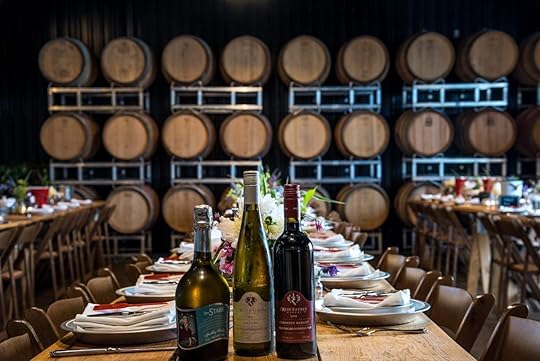
Photo: Reif Estate Winery/Facebook
Head down Niagara Parkway to visit Reif Estate Winery, which has a large tasting room, light bites for snacking, and an outdoor sensory garden so that guests can stroll while taking their time enjoying a glass of wine. Reif is known for its sweet icewine, which won eight medals in 2017. Following the parkway trail along the river will lead you to several more wineries such as the family-owned Riverview Cellars and Lailey Winery, which has been a staple since 1973. There are also many other wineries tucked down the roads that branch off Niagara Parkway.
Two Sisters Vineyards

Photo: Two Sisters Vineyards/Facebook
Right off the parkway is Two Sisters Vineyards, which is a stately, gorgeous property with sprawling vineyards that rival those found in the top vineyard regions in the Americas. Two Sisters offers educational wine tastings and tours, which help you learn about the winemaking process while tasting straight from the barrel. The winery also offers a tour at twilight, which ends in a pond-side picnic. The on-site restaurant, Kitchen 76, serves lunch, dinner, and dessert.
Trius Winery

Photo: Trius Wines/Facebook
Further inland is Trius Winery, which is an Instagram lover’s haven. Filled with spots — such as a pink flower wall with a neon sign that reads “rosé all day” — to capture the perfect selfie or groupie, Trius has an excellent example of the region’s popular icewine. Its restaurant specializes in farm-to-table ingredients, and the winemaker and chef often work in tandem to create complementary dishes with wine pairings.
Treadwell

Photo: Treadwell/Facebook
A trip into the historic old-town section of Niagara-on-the-Lake offers a number of locally owned restaurants. One of those to put on your list is Treadwell, which serves lunch and dinner. Treadwell has an extensive wine list that focuses on local wines and a few Italian and French selections. The restaurant has an upscale dining space and uses locally sourced ingredients, such as the East Coast Lobster “Club” for lunch ($36) and Pan Roasted Halibut for dinner ($44). 

More like this: How to bike the Fruit and Wine Byway in Palisade, Colorado
The post Niagara wine country is the perfect region for winery hopping by bike appeared first on Matador Network.

Person visited deepest ocean spots

Visiting the deepest spot in the ocean (the Mariana Trench, located in the Pacific Ocean) is challenging enough, let alone all five deepest spots. No one has ever managed to accomplish that impressive feat — at least, not until American businessman and explorer Victor Vescovo showed up in his $35 million submersible named “Limiting Factor.”
This week, Vescovo confirmed that he completed his Five Deeps Expedition, visiting the known five deepest spots in the world’s oceans: the Molloy Hole in the Arctic Ocean, the Puerto Rico Trench in the Atlantic, the South Sandwich Trench in the Antarctic Ocean, the Java Trench in the Indian Ocean, and the Mariana Trench — where, sadly, he found plastic waste — in the Pacific. His final dive, to the Molloy Hole, marked the first time a human has ever descended to the area.

Photo: Five Deeps Expedition
Vescovo collected data for scientific purposes during the course of his expedition, mapped the oceans’ floors, discovered at least 40 new species, collected 400,000 biological samples, and retrieved rare water samples from the bottom of each location.
The explorer, who is 53 years old, has also climbed the tallest mountains on each of the seven continents and skied to the South and the North poles. He says his goal is not to shatter records, but to advance scientific discoveries. 

More like this: Diving in Egypt’s Red Sea reveals a world of hidden wonders
The post Explorer becomes the first person to dive to the oceans’ deepest spots appeared first on Matador Network.

Creepiest ghost towns in Asia
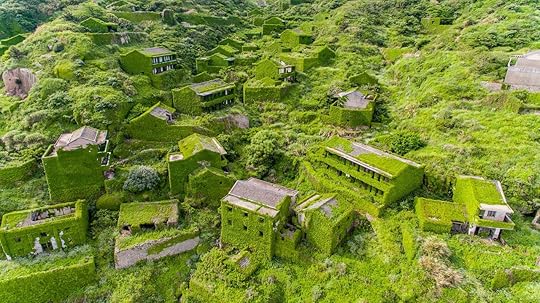
If you’re a traveler keen on thrills and spine-tingling attractions, a little trip to one of the 50 or so nations in Asia should be top of your bucket list. Whether it’s visiting an entire village swallowed up by nature in China or a totally deserted manufacturing plant on a Japanese island, Asia’s ghost towns are the perfect spooky spots to visit for fans of dark tourism. Here are five ghost town in Asia that are so creepy they’ll have you watch over your shoulder as you explore them.
1. Hashima Island, Japan

Photo: Sean Pavone/Shutterstock
An island getaway is the perfect addition to any trip itinerary, though this island probably isn’t the kind you’d be looking for — no white-sand beaches, resorts, or paddleboard rentals here. Located off the coast of Nagasaki, Hashima Island was acquired by Mitsubishi in 1890 to mine deep-sea coal, and remained in use until the late 20th century. When petroleum replaced coal as fuel in the 1960s, and amid rumors of forced labor, the mine closed in 1974 and the island’s mining population abandoned it.
The island opened to tourism in 2009, and remains a singular example of the effects of weather and corrosive seawater on abandoned buildings. It’s an easy visit from Nagasaki, the target of a nuclear attack in 1945, which is an eerie destination in its own right.
2. Bokor Hill Station, Cambodia
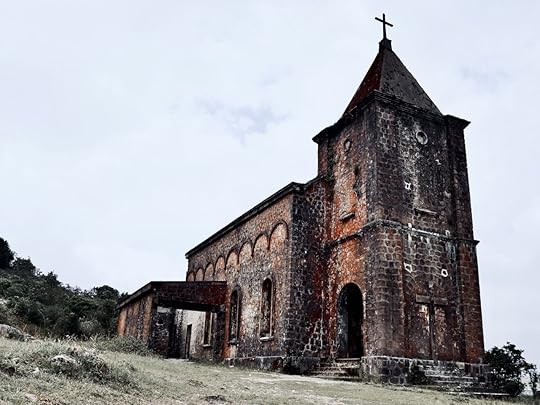
Photo: Von hier bis dort/Shutterstock
Formerly a popular retreat for the French elite, Bokor Hill Station is now probably the last place vacationers would want to visit. The truly adventurous, however, will revel in the overgrown ruins and appreciate its spooky atmosphere. Located about 23 miles west of Kampot in southern Cambodia, the station was abandoned by the French during the First Indochina War, due to local insurrections. It rebounded in the 1960s after the opening of a casino, but was abandoned again in the 1970s.
You can still see the holes from bullets that struck the French colonial buildings, and the ruins of the original Bokor Palace, which was the centerpiece of the town. Visitors can hike to an elevation of 3,000 feet to see the town’s ruins, which includes an old Catholc church from the 1920s.
As if the place wasn’t already chilling enough, it is also rumored that 900 people died during the construction of Bokor Hill Station, due to the humidity and harsh conditions.
3. Houtouwan, China

Photo: Joe Nafis/Shutterstock
Houtouwan, a village located on Shengshan Island, east of Shanghai, was once a thriving fishing community. Today, due to lack of access to education, food delivery, and the lack of electricity and running water, the island has been abandoned since the early 1990s, though it remains hugely popular with visitors.
The town looks like it is being slowly but surely devoured by nature, with many of the crumbling houses covered in thick layers of ivy. You can hike to the top of one of the island’s many hills for a sweeping view of the abandoned, overgrown community. Some of the old residents have remained, despite the lack of modern amenities.
4. Bhangarh, India

Photo: keshavyadav1111/Shutterstock
Considered to be one of the most haunted places in India, Bangarh is the site of several reportedly supernatural activities: sightings of strange lights at night, phantom sounds of dance and music, and stories of a curse dating back centuries. It’s said that this 17th century town and its forts were cursed after a tantric was crushed to death by a stone, following his infatuation with a princess and his attempts to cast a love spell on her. Locals believe that the curse condemned the village to desolation and to be forever inhabited by ghosts. Because spirits are thought to enter the place after sunset, the Archaeological Survey of India has gone so far as to forbid entry to visitors after 6:00 PM.
Located about 53 miles from Jaipur, the ruins of Bhangarh are well-preserved and include temples, public chambers, marketplaces, mansions, and the royal palace. Just remember — you must visit during the daytime or you may never return.
5. Agdam, Azerbaijan
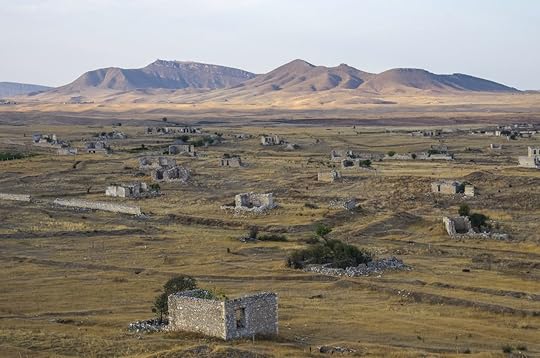
Photo: Igor Dymov/Shutterstock
Agdam’s transformation from a metropolis into a ghost town was a dramatic affair. Founded in the early 19th century, Agdam was formerly the capital of the Agdam District and grew to a population of over 23,000 by 1979. In the 1990s, however, the city was mostly destroyed during the Armenian occupation, its buildings looted and many of them — including the mosque — heavily vandalized. Now, the city is completely abandoned and in ruins, and still occupies a precarious position at a cross section between Georgia, Armenia, and Russia.
Given the town’s location, and the far-flung displacement of its residents, it’s unlikely that Agdam will be restored to its former glory for quite some time. Interestingly enough, though the city’s old soccer team has relocated, they kept the Agdam name out of respect for their heritage, even though no one has lived in the city for over 25 years. 

More like this: These photos will inspire you to road trip through California’s ghost towns
The post The 5 creepiest ghost towns in Asia appeared first on Matador Network.

Best tips for a cross-country Amtrak

When our train chugged out of Union Station in Washington, DC, our month-long planning process was in motion. My then-boyfriend, now-husband Joe and I were set to ride across the United States with nothing but two backpacks and a couple of rail passes. The plan was to spend 16 days in August 2017 rolling from the East Coast to San Francisco via train.
The two of us had been dreaming about a cross-country trip for years, and we figured the train would be easier than driving. In some ways, the train was a more leisurely way to travel. Riding Amtrak allowed us to play rounds of hangman while enjoying the distant mountain view instead of navigating, and to savor a mini bottle of red wine while stretched out in the dining car rather than staring at the open road for hours.
But in other ways, riding across the country on Amtrak was more taxing than we had imagined. All of the articles I had read praised the charm of the train and the stunning landscapes we would see. But we would have appreciated some warning about the bad and the ugly.
If you are drooling over those social media posts about taking the train trip of a lifetime, make sure you read these seven tips before you hop on board.
1. Your train will arrive late.
Every single train we took arrived at least five hours late. This appears to be typical. In 2014, The Washington Post broke down the percentages of on-time arrivals, and the California Zephyr, one of the trains we took, arrives on time for only 34 percent of its trips. After our first leg, we had planned to spend 10 hours touring Chicago, but were so delayed that we only had 45 minutes to run and grab lunch from a nearby French market before dashing back to catch our next train leg.
Not all of the delays are Amtrak’s fault. Amtrak shares many of its lines with freight trains, which have priority over passenger cars. Amtrak has taken a more aggressive approach this year, tweeting when freight trains cause delays. Amtrak itself has said that the worst offending freight trains regularly cause delays of up to three hours or more.
Early one morning around 3:00 AM, we woke up somewhere outside of Omaha and noticed the train had stopped. We stayed put for several hours to let a freight car pass by; and it’s a real challenge to fall back asleep when you know you aren’t making any progress. We had been planning to rent a car halfway through the trip to visit the Tetons, but picked up a car in Denver — several days early — because we became frustrated with the lag. Be ready for Amtrak to test your patience.
2. You will feel claustrophobic.
Before we had experienced a 24-hour train ride, it was easy to tell ourselves that at least we could get up and walk around. We hadn’t expected to feel quite so cramped. Sure, the viewing car is great, and it was very cool to check out the 360-degree view of the passing horizon, but that car is often crowded, making it hard to find a seat.
And, like on an airplane, you won’t sleep well in standard seats. We had packed sleeping bags and spread them out on the floor, but even then we didn’t get much shut-eye. You’ll likely feel a little grouchy and also tired of having so many strangers around you. Some advice: Even if the train stops for just a few minutes, step out for a breath of fresh air.
3. Sleeper cars are 100 percent worth it.
For the last two segments of our trip, we decided we needed a sleeper car for our sanity’s sake. It cost a couple of hundred more dollars each time, but we got a lot for that money: a private space with a table and two chairs that fold out to two full-length beds at night; a quieter segment of the train; a less-crowded bathroom; and attendants who pay special attention to you.
After spending so many hours trying to get comfortable in an upright position, the sleeper car felt like a luxury suite. I would absolutely recommend saving up for that upgrade.
4. It’s cheaper (but a pain) to upgrade your ticket once onboard.
We had read that it was less expensive to bump up a standard ticket to a sleeper car once the train gets rolling. It makes sense — if no one is using the rooms, Amtrak might as well sell them for a lower price.
However, we hadn’t known about a few factors that made upgrading a hassle:
The conductor on the train can’t adjust your ticket. Instead, you have to call the 1-800 customer service number to make changes. Not once, but twice. First you call to switch the ticket class, and then, after obtaining approval from the conductor, to make the purchase.
We made these calls at 4:00 AM because the train had left at 2:00 AM instead of the scheduled 11:00 PM.
Cell service was spotty because we were in the middle of the desert.
The call dropped twice before we were able to give our credit card number to the customer service agent.
If we could do it over again, we would make our lives easier and spend a little more money to reserve the sleeper car before leaving. Not to mention that the sleeper cars were booked up on one of the legs. For the leg that the sleeper car was not available, we did upgrade to first class, so while we still had upright seats, we were almost alone in the car, which made it more bearable.
5. Train food is surprisingly decent.
The food in the dining car exceeded my expectations. I can’t say it was delicious, but it wasn’t bad, even though it was prepared in a microwave. If you have a first class or sleeping accommodation ticket, meals are included, and some trains offer options like salmon or steak. There’s also wine, which is helpful for those long nights.
One warning: You don’t get to pick your dining companions if there are fewer than four of you. You may end up sitting next to a woman who complains about her lack of sleep and sends her meal back twice, or you also might sit next to a lovely couple who has been traveling via train for their anniversary every year since they got married. It’s the luck of the draw.
6. The onboard staff will treat you like family.
Every employee we met on the trains treated us extremely well. Most of the staff were working 12-hour shifts on their feet but managed it with grace and laughter. The employees were the most impressive part of our Amtrak experience.
When the conductor couldn’t help us change our ticket, he made sure to check on us. The attendants who worked in the sleeper car section were thoughtful and funny. The wait staff smiled even in the face of ridiculousness. We felt welcomed and accommodated by everyone.
7. The experience is once-in-a-lifetime.
Would we do it again? Maybe, but not in the same way. If we were to take another extended US train trip, we would start in Denver and go West. Sitting at a standstill in the beige plains of Nebraska was a bit too demoralizing for us.
However, we fulfilled our mutual dream of traveling across the US. And the best part of the train is that the experience involved other people rather than being isolated in a solitary vehicle. Strangers became neighbors after sitting beside them for a full day.
And when I was able to nab a seat in the train’s viewing car, it truly was perfect to sit with my journal while the rust-colored cliffs of Nevada passed by. Plus, it was the ideal launch point for our lifelong adventure together: Joe and I got engaged while playing hangman as the train slumped into Chicago. Now that’s a story to tell the grandkids. 

More like this: The best scenic train trips to see fall foliage in the US
The post 7 things to know before riding Amtrak across the country appeared first on Matador Network.

What not to say and do to bartender

Just because bartenders are here to help you have a great, relaxing time, it doesn’t mean you can make them jump through hoops and show them a lack of respect. Just like with any other job in the service industry, bartenders are happy to help, but they have their thresholds, and you should be careful not to cross them — or you’ll never get a decent cocktail out of them again.
1. Question our bar knowledge
Do bartenders make mistakes? Of course. Do bartenders know everything about cocktails, wine, beer, and spirits? Of course not. But the quickest way for a customer to offend a bartender is to question the bartender’s knowledge. If you order a cocktail we’ve never heard of, most bartenders will let you know and look up the recipe. Just don’t try to belittle the bartender just to show how smart you are.
2. Interrupt us with your drink order
If you need to signal for the check or another round, that’s fine. But if we have already greeted you and you can see we are busy making drinks, wait until we come over to order. We’re not ignoring you, we’re trying to do our job with a little bit of focus. Every time we’re interrupted, it throws us off just a little and slows down the whole process.
3. Tip a dollar a drink
Tipping one dollar per drink was customary 20 years ago, but times and rent prices have changed. A dollar a beer at a bar — fine. A dollar a drink at a custom cocktail bar with table service — not okay. When in doubt, 20 percent always works. It seems like a lot when cocktails cost $16 a pop, but you tip your barista a dollar for your daily drip, why not $2 for that mezcal sour with egg whites?
4. Second-guess us
If you have a request for something off-menu or want us to modify a drink order, by all means, ask. But if we say that we can’t, accept that. We want you to have what you want, but if we refuse a request, there is a reason behind it — we’re not just being petty.
5. Ask us personal questions
Bartending is our job, not our social life. We are not obligated to share our personal lives with customers unless we chose to. Even if you mean no harm, don’t be surprised if your bartender seems evasive when answering personal questions.
6. Mock the ambiance
If the lights are too low or the music is too loud, there is a polite way to request we modify the experience. And there is the rude way: “Are these lights always so bright?” and “Could this music be any louder?” If the lights or music aren’t at an ideal level, it may be because your bartender has been so busy making drinks and serving guests, they didn’t have time to notice. Just ask nicely. 

More like this: 7 downsides of being a professional bartender
The post 6 ways customers gravely insult bartenders appeared first on Matador Network.

September 10, 2019
The best dessert cafes in Athens

Exploring the sites and museums of the capital city of Greece is great, but Athens’ heart beats where people come together to talk, laugh, and enjoy good food. So, where you really want to be in order to understand the local way of living is a patisserie. Patisseries are an indispensable part of everyday life in Greece, and indulging in a housemade dessert is a favorite pastime among Athenians of all ages.
If you always have room for dessert, read on for the best dessert places in Athens. Note that most of the places listed below stay open until late. Some are even open past midnight, also serving cocktails and savory dishes.
1. Chocolatata

Photo: Chocolatata/Facebook
When a long-established pastry chef and mother, and her entrepreneur son, decided to create something sweet, Chocolatata was born. They use only the finest raw materials in their classic recipes. The result is chocolate just as lovely as the traditional Belgian variety. Athenians swarm to Chocolatata in the university neighborhood of Zografou for the red velvet and carrot cakes, the lemon pie, and the beloved English banoffee pie. The truth is that you too will be instantly hooked.
Where: Papadiamantopoulou 138, Zografou
2. Ohh Boy

Photo: Ohh Boy/Facebook
The description of Ohh Boy says it all: “Bistro. Coffee, treats, and small eats. Pet and human-friendly. For people with an open mind and a big smile.” Alluring, isn’t it? Wait until you pass through the door of the minimal, chalk-white restaurant with its romantic outdoor seating area on the pavement and the sunlit bar overlooking the busy street. Ohh Boy has nothing to hide and is proud of its open kitchen, which satisfies customers’ curiosity. Apart from the all-time classic desserts such as mille-feuille, tiramisu, and chocolate mousse, Ohh Boy specializes in vegan desserts. Try the strawberry chocolate cheesecake and the cashew lemon pie, and you won’t be able to put your fork down.
Where: Archelaou 32, Pagrati
3. Little KooK
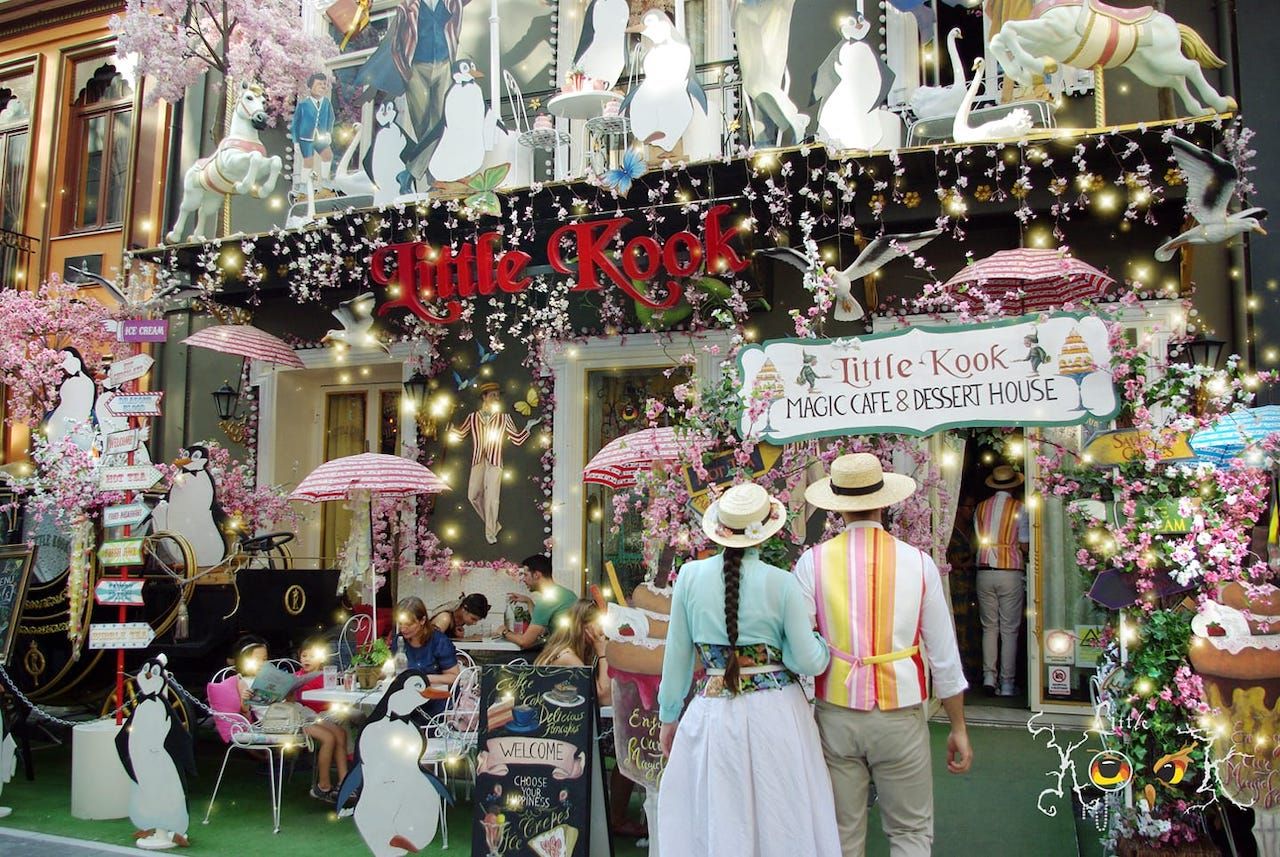
Photo: Little KooΚ/Facebook
Little KooK is a themed café for anyone who believes in fairytales. Both the exterior and interior of the two-story mansion are overloaded with ornaments and vintage items, and the high ceiling rooms are dedicated to fantasy characters such as Cinderella and Alice in Wonderland. The central theme of Little KooK changes regularly depending on the season, and the staff’s attire matches accordingly. Mary Poppins provided the most recent theme. Even if you are skeptical about the power of magic, you will surrender to Little KooK’s supercalifragilisticexpialidocious desserts.
Where: Karaiskaki 17, Pryri
4. Yiasemi
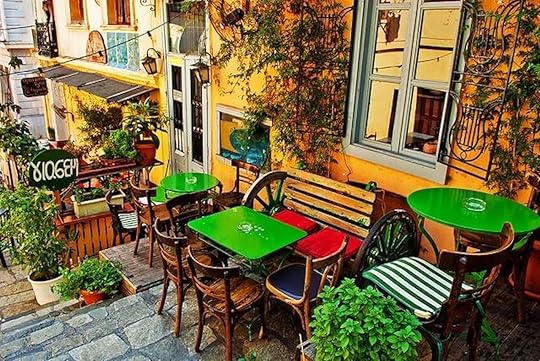
Photo: Γιασεμί – Yiasemi/Facebook
On the steps of the scenic Mnisikleous street in the island-like neighborhood of Plaka, Yiasemi (meaning jasmine) has brought new life to Greek café-restaurants. Accompany the traditional Greek coffee served in a mini cup with any of the handmade pies: lemon, orange, apple, or milk. You can also opt for Greece’s most popular baklava dessert served with mastiha ice cream — a dessert made from the resin of a tree grown on the island of Chios that tastes like anise, pine, and vanilla. You can only find mastiha ice cream in Greece. On some weekends, Yiasemi hosts live music events, which often carry on until the early hours.
Where: Mnisikleous 23, Plaka
5. Zuccherino

Photo: Zuccherino Ζαχαροπλαστείο/Facebook
Since 1988, Zuccherino has been the one-stop for Athenians and visitors with an incurable sweet tooth, offering its customers high-quality desserts and first-class service. The first generation of this family-run patisserie invested in timeless dessert recipes such as profiterole and walnut pie. Today, the pastry chef and gelato master, who is also the son of the founder, steers towards a free-spirited and distinctive creative flair. The chocolate soup served with a spoon in a bowl, ruby choco bomb, and pistachio cake are popular choices. If you are only going for one scoop of gelato, let it be the signature “death by chocolate.”
Where: Μitropoleos 80, Monastiraki
6. LUKUΜADES

Photo: Lukumades/Facebook
Loukoumades are deep-fried, bite-sized dough balls made with flour, dry yeast, water, and starch. They are deeply rooted in Greek history. The first record of this pastry dates back to ancient Greece. Even Aristotle wrote about these sweets. Traditionally, loukoumades are served hot, smothered in honey and drizzled with cinnamon.
However, LUKUΜADES introduces a novel way of presenting this classic dessert. Now, you can order loukoumades injected with chocolate or savory loukoumades covered with cheese. And, if you’re wondering whether or not they are suitable for vegans, the answer is absolutely, as long as you can resist the artisan gelato and creamy toppings.
Where: Eolou 21 & Agias Irinis, Athens
7. Choureal

Photo: Choureal – Choux & Profiterole/Facebook
Choureal is for the chocoholic dessert lovers. Specializing in profiteroles, the Greek-English owner Miles-Anastasios wanted to create a space that offers a multi-sensory experience. Hence, the production room — where a fresh batch of choux pastry emerges every hour — is an open space, revealing the choux-making process. Choureal offers a tailor-made service, so first you select the filling of your choux (Madagascar vanilla cream or handmade ice cream). Then, you pick one of the Valrhona premium chocolates (bitter, white, praline, or caramel) to cover your choux, and lastly you select any of the homemade dressings, such as raspberry marmalade and cookies.
Where: Ermou 18 & Diomeias 2, Athens
8. Nancy’s Sweet Home
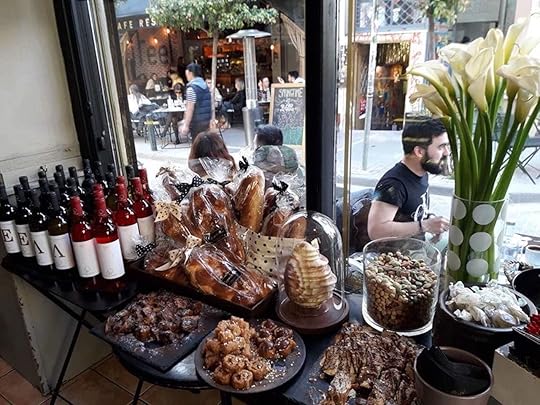
Photo: Το Σερμπετόσπιτο της Νάνσυ / Nancy’s sweet home/Facebook
Among Athenians, Nancy’s Sweet Home is known as a serbetospito, from the Arab word şerbet, meaning “sweet,” and the Greek spiti, meaning “home.” On the central piazza of Psyri, Nancy’s Sweet Home is an excellent place to boost your energy after hours of sightseeing, as well as to indulge in people-watching. The menu has over 50 desserts; many of these, such as the kunefe and tamam chocolate, have Middle Eastern influences. Ask to top your dessert of choice with the traditional sticky kaimaki ice cream, made with the Chios tree mastiha resin and a flour made from orchid tubers. If you are on a romantic outing, share Nancy’s signature “love dessert” for two.
Where: Iroon Square 1 & Karaiskaki, Psyri
9. Cake
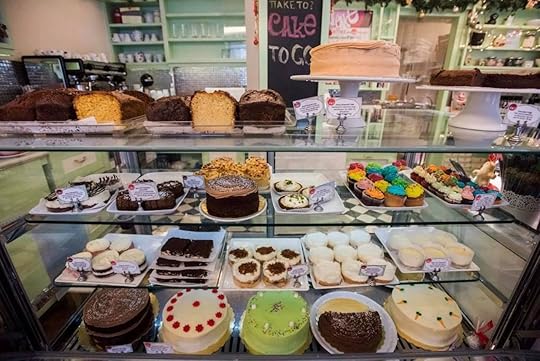
Photo: CAKE Kolonaki/Facebook
If all you can think of is cake, then look no further than Cake in central Athens’ most affluent neighborhood, Kolonaki. American-style cakes, cheesecakes, and cupcakes have been putting on a great show over the past 15 years in this friendly café. Cake is also very popular among freelancers and digital nomads who are looking for a sweet corner to unleash their creativity.
Where: Irodotou 15, Kolonaki
10. Chatzis

Photo: Chatzis/George Menzelos/Facebook
Chatzis has nurtured over four generations with its syrupy desserts, such as baklava, kataifi, revani, galaktompoureko, and saragli. In 1908, Chatzis established itself as a coffee and pastry meeting spot in Greece’s second-largest city, Thessaloniki. It took many years and hard work for historic Chatzis to bring its elaborate recipes to Athens. Athenians and tourists alike have embraced Chatzis for its organic, unprocessed materials — such as buffalo milk and butter from Chatzis’ own farms.
Where: Mitropoleos 5, Syntagma 

More like this: The ultimate shopping guide to Athens
The post The 10 best places for dessert in Athens, Greece appeared first on Matador Network.

Sweden's tallest mountain shrinking
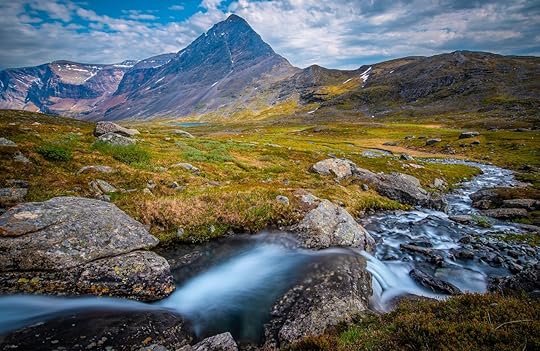
When you’re the champion, it’s tough to stay on top of your game and retain your trophy year after year — but this mountain in Sweden lost its title through no fault of its own. Kebnekaise, the highest peak in Sweden in the country’s far north, is shrinking due to global warming. In fact, it’s shrinking so significantly that it can no longer call itself Sweden’s highest mountain.
Located about 95 miles inside the Arctic Circle, the mountain has two peaks, with the southern peak regularly measuring higher than the northern one. In early September, however, it was discovered that the northern peak was actually about four feet higher, due to rising Arctic temperatures melting the glacier on the southern peak.
Gunhild Ninis Rosqvist, a geography professor at Stockholm University, said, “This is quite a symbol. A very obvious, very clear signal to everyone in Sweden that things are changing.”
She added that although the mountain has been measured regularly since the 1800s, the shrinkage has largely occurred within the last two decades. The trend isn’t encouraging, but that doesn’t mean the mountain can’t regain lost ground. With the buildup of winter snow and ice, it’s possible that the mountain’s southern peak could once again regain its title. 

More like this: 7 insane hikes with epic views that are worth your blood, sweat, and tears
The post Sweden’s tallest mountain loses title due to global warming shrinkage appeared first on Matador Network.

Trophy hunter to import rhino parts

In a controversial decision, the Trump administration is allowing a trophy hunter to import the body parts of a rare black rhinoceros into the US.
Chris D. Peyerk paid $400,000 to an anti-poaching program to kill the rhino. He hunted the animal in Namibia last year, and he will now be issued an import permit by the Fish and Wildlife Service to bring the animal’s skin, skull, and horns to the US, reports the Associated Press. The animal is protected under the Endangered Species Act, which prohibits the import of endangered animal trophies.
According to the International Union for Conservation of Nature, there are only 5,500 black rhinos left in the wild, and poaching of the animal remains a huge threat. In Namibia, only five male black rhinos a year are allowed to be killed by hunters.
Permits for importing body parts to the US are only issued if doing so will benefit the species’ survival. Indeed, the Fish and Wildlife Service says, “Legal, well-regulated hunting as part of a sound management program can benefit the conservation of certain species by providing incentives to local communities to conserve the species and by putting much-needed revenue back into conservation.”
This is the third of such permit given to a trophy hunter since President Trump took office in 2016. Three permits were also delivered during the Obama administration. 

More like this: 5 awesome wildlife safaris that aren’t in Africa
The post US to allow trophy hunter to import body parts of critically endangered rhino appeared first on Matador Network.

Japan to dump Fukushima water

Japan is still dealing with the effects of the devastating Fukushima meltdown in 2011, triggered when a tsunami struck the nuclear power plant.
Over one million tons of contaminated water is stored at the site and it’s believed that there won’t be any space for it by summer 2022. To remedy the issue, Japan’s environmental minister suggested that the operator of the plant should dump it directly into the Pacific Ocean, a solution that isn’t making anyone happy but is especially angering to the local fishermen.
Tokyo Electric Power (Tepco) has struggled to manage the buildup of groundwater, which becomes contaminated when mixed with water used to prevent the damaged reactor cores from melting.
Regardless of the ultimate solution, Japan is under immense pressure to address the problem before it hosts the Olympic Games in Tokyo next summer. 

More like this: How to visit Chernobyl safely and legally
The post Japan wants to dump Fukushima radioactive water into the Pacific Ocean appeared first on Matador Network.

Matador Network's Blog
- Matador Network's profile
- 6 followers



